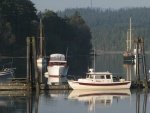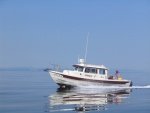Thats right Roger, they do use that format but I am not sure of the history or reasoning. In the case of personal emergency, the Coast guard has the knowledge/tools to accept various formats so anyone can use what works well for them. If you would like to take a coordinate from the coast guard, then you can bet it would be in the degrees minutes format. If you want to be able to take a coordinate reported from another boat in distress, the format will vary. Best to keep pen and paper ready and learn your settings.
Be sure to start practicing the USCG standard reporting format so it sounds official.
Standard Latitude/Longitude
format for CISAR operations
The standard Latitude/Longitude format for
CISAR operations is Degrees, Decimal
Minutes (DD° MM.mm’).
Latitude is always read and written first
noting “North” since the U.S. is North of the
Equator.
Longitude is always read and
written last noting “West” since the U.S. is
West of the Prime Meridian.
When speaking Latitude and Longitude
coordinates for 39° 36.06’N by 76°
51.42’W. Latitude and longitude is stated
as:
“Three nine degrees, three six decimal zero
six minutes North by seven six degrees,
five one decimal four two minutes West.”
The words, “degrees,” “minutes,” and
“decimal” must to be spoken.



